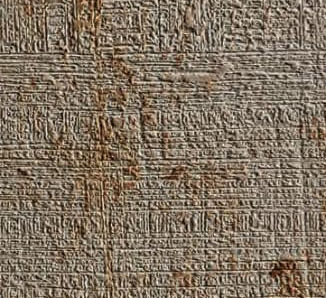Glossary of Technical Terms
Like most professions, home improvement, house, painting, and decorative painting have all adopted “technical terms“ ( better known as jargon) that are familiar to professionals but often unfamiliar to those outside their trade.
We want you to understand what we do and how we do it. And for that, you’ll need to understand our language.
We hope this glossary, which is accessible from virtually every place we use technical terms to describe what you see or how we did it, will make that easier.
IMPORTANT REMINDER: In these descriptions, any word or phrase in yellow is included in the Glossary as a separate entry.
Amorphous
Wall glazes can create the illusion of depth and movement on a surface. However, when the glaze creates the appearance of depth without movement, it’s called “Amorphous.”
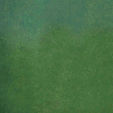
Here's an example of an amorphous finish.
(click image to enlarge)
Architectural
Coatings
Decorative finishes, executed with various types of plaster rather than paint, usually applied with a trowel
Here are examples of architectural coatings.
(click images to enlarge)
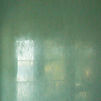
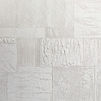

Bridge
A bridge is a term that refers to a part of a stencil that separates one part of the design from another.
Without bridges, the stencil would fall apart.
Broken-Color
"Broken-color" is one of several generally accepted terms that describe the look of a mottled finish. Another is parchment. and scumbled is a third. All three terms describe a finish that simulates the illusions of depth and movement on what is actually a flat, smooth surface.
Burnish
One of the generally accepted terms for the technique used to execute a scumbled finish, which simulates the illusions of depth and movement on what is actually a flat, smooth surface.
Chip deck
A chip deck is a collection of paint chips that paint manufacturers provide to their professional clients so they can show their customers color options in the space they have commissioned the professional to finish. Each chip has a color value, a unique hue, and a unique color number printed on the back.
Clearcoat
A transparent medium applied over artwork to protect it and/or adjust its sheen
Color Wash
A color wash is a thin, even layer of glaze that adjusts the hue of whatever it covers. It is also called an “overglaze.”
Cracking Medium
A transparent medium applied under a glazed finish to make it craze and/or crack like an ancient oil painting
Deconstructed
Finish
A multi-process glazed finish whose elements are applied separately and randomly so as to appear ancient and the result of benign neglect
Depth
A characteristic of some glazed finishes that causes them to appear three-dimensional when they are actually flat (see also movement)
Dragged Finish
A technique synonymous with a dragged finish, including faux bois and wood grained to create a faux finish that looks like wood
Dutch Metal
Dutch metal is an imitation gold leaf made from a brass alloy that resembles genuine gold leaf. However, it unfortunately tarnishes like brass and requires a protective clear coat to prevent further tarnishing and even out the sheen.
(synonymous with imitation gold leaf)
Faux Finish
Faux is French for "fake," and a faux finish is any painted finish possessing qualities that appear to look like a material that isn’t paint
Flogger
A tool used to execute wood-grained finishes
Flogging
The act of using a flogger to manipulate graining liquid shortly after it’s been applied to the basecoat as the first step in the execution of a faux bois finish
Genuine Gold
Leaf
Squares of real gold, rolled and/or pounded to a thickness less than one-tenth the thickness of a human hair
Gilding
The act of adhering metal leaf onto a surface using size
Glazing
The act of applying and manipulating one or more glazes to create a faux finish
Glazing Liquid
A translucent medium that is mixed with a pigment and used over a basecoat to create a faux finish
Graining
A technique synonymous with faux bois and dragging to create a faux finish that looks like wood
Hue
The characteristic of a paint color that describes where it falls on a color chart of primary, secondary, or tertiary colors. Together with a second characteristic, the color's value, the exact color is determined. See also “value”
Imitation Gold
Leaf
Metal leaf made of brass and other metals that is used as a substitute for genuine gold leaf. Synonymous with “Dutch metal“
Level 5
A term commonly used in the construction industry to describe the qualities of a drywall surface that meets the highest standards for flatness and smoothness
Marmorino
An architectural coating similar to Venetian plaster that contains one or more grits that leave a rough surface when burnished
Here are examples of marmorino.
(click images to enlarge)



Mottled
A technique used in glazing to create a scumble or randomly varying finish with respect to its hue and value
Here's an example of a mottled finish.
(click image to enlarge)

Movement
A characteristic of some glazed finishes that causes them to appear to flow in a given direction (see also depth)
Here are examples of finishes with movement.
(click an image to enlarge)
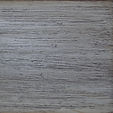
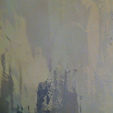
Multi-Process
Finish
A faux finish or architectural coating that requires more than one step to execute.
Notan Gilding
A surface covered only partially with metal leaf (see also traditional gilding)
Here are examples of notan gilding.
(click an image to enlarge)
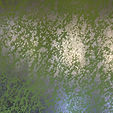

Paper Finish
A glazed finish executed with blank newsprint as the primary tool
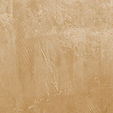
Here's an example of a paper finish.
(click image to enlarge)
Prepared
Surface
A substrate that has been filled and sanded smooth and level, then primed and painted with a basecoat of a specific color and sheen that serves as the background for a glazed faux finish or architectural coating
Process
A single step in the act of executing a faux finish
Single Process
A faux finish or architectural coating that requires only one step to execute.
Size
A medium used to attach metal leaf to a substrate
Scumble
A technique used in glazing to create a mottled or randomly varying finish with respect to its hue and value
Skew
The act of reverse brushing while applying metal leaf in gilding to remove unattached overlapping edges
Snap Time
The window when size is at the proper level of stickiness for leaf application (not so wet that it causes the leaf to currdle but tacky enough to attach the leaf to the substrate)
Stria Finish
A technique synonymous with a dragged finish, including faux bois and wood grained to create a faux finish that looks like wood
Substrate
The surface upon which paint, a decorative finish, or an architectural coating is applied
Tack
The amount of stickiness a size possesses after application (see also snap time)
Thinner
A solvent used for removing paint and as the solvent component in artist oils and oil-based house paints.
Tool
Any implement used to manipulate glaze while it is still wet, such as blank newsprint, a rag, or a sponge
Traditional
Gilding
A surface entirely covered with metal leaf arranged in a grid pattern (see also notan gilding)
Here are examples of traditional gilding.
(click an image to enlarge)
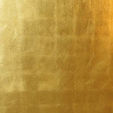
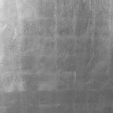
Trompe l’oeil
French for “fool the eye,” the term refers to any artwork that appears to be three dimensional and realistic
Trowel
A tool used to apply architectural coatings and/or burnish them after application
Xylene
A highly volatile solvent used for removing paint and as the solvent component in lacquers.
